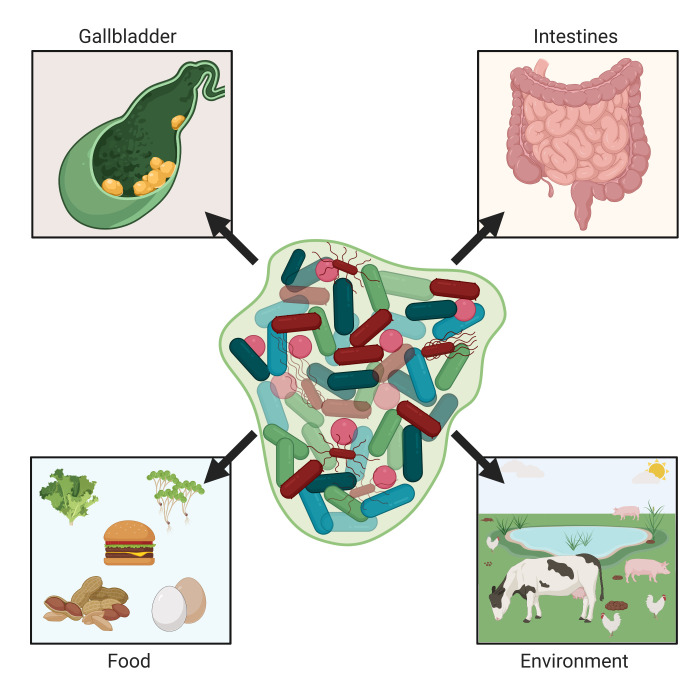Figure 1.
Salmonella biofilms in the environment and humans. Non-typhoidal and typhoidal salmonellae are naturally acquired by humans through environmental or food sources. Salmonella Typhimurium colonizes and can form biofilms on various types of produce, while S. Enteritidis is often found within and on eggs. When within the intestines of various non-human animal species, salmonellae can cause either diarrheal disease or be a non-pathogenic inhabitant (e.g., in the chicken). This can lead to contaminated meat upon animal processing or shedding resulting in contaminated animal feces. Once ingested by the host, Salmonella spp. are capable of forming biofilms in the intestines and for S. Typhi, after systemically gaining access to the liver, can pass into the gallbladder and form biofilms on cholesterol gallstones. These biofilms within humans facilitate chronic Salmonella infection as well as continual shedding of Salmonella from the host. Images created with BioRender.com.

